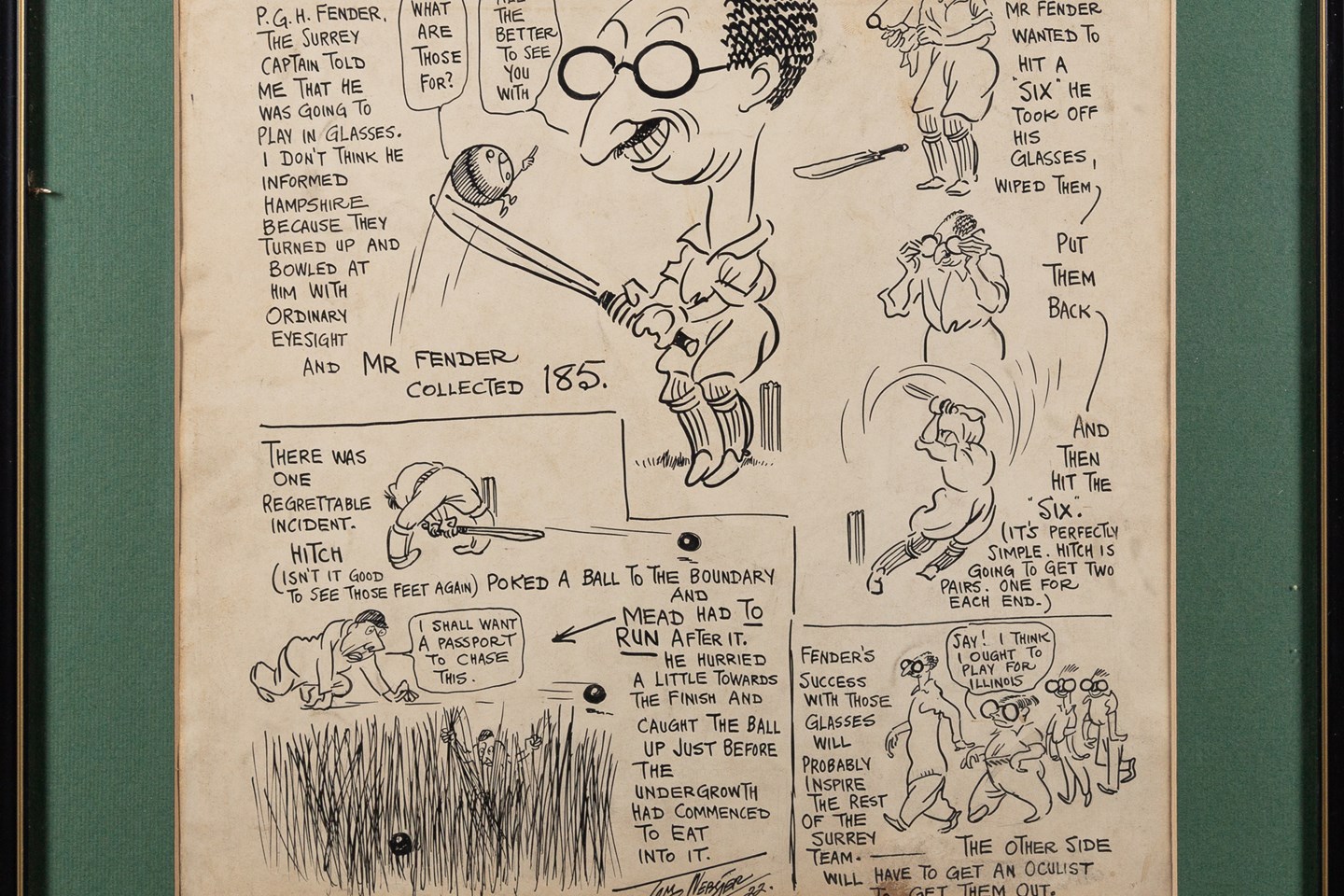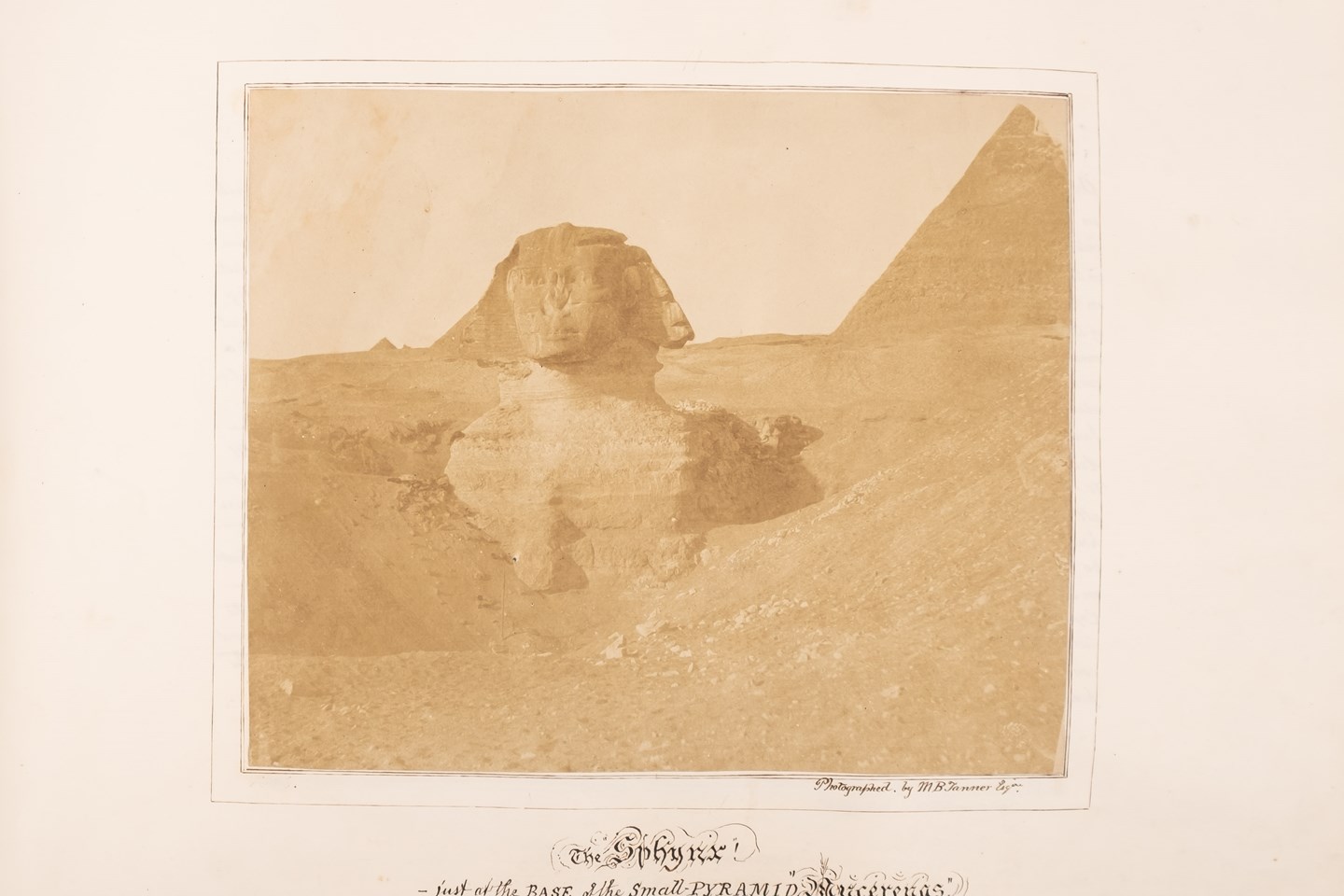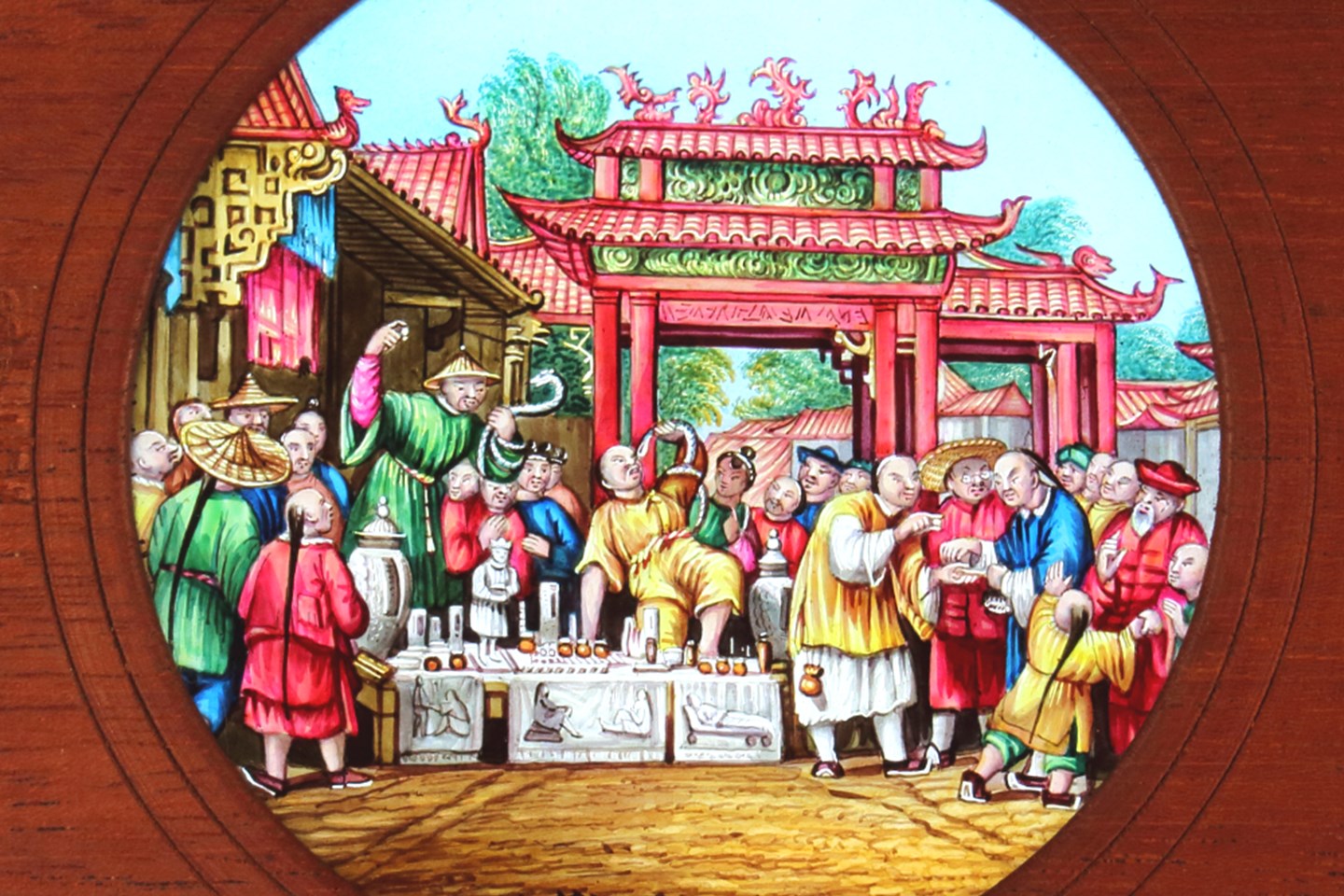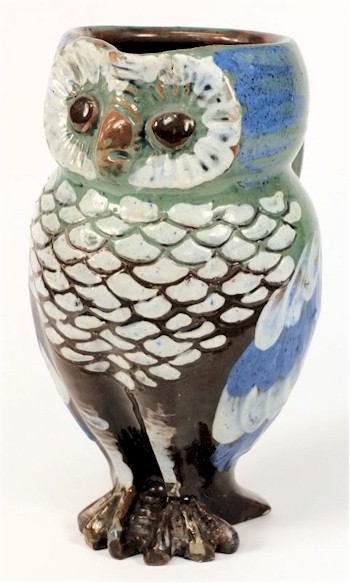
A William Baron Barnstaple pottery owl vase influed by his time at Royal Doulton.
In a previous posting, I wrote about a Torquay pottery pottery bust and the remarkable similarities, bordering on artistic plagiarism, between it and a Copeland Parian prototype. Well, I seem to have stumbled upon a similar state of affairs with another Devon pottery.
Barnstaple is a North Devon town at the opposite end of the same seam of red earth/clay that starts in the south around Torquay. It too has a strong pottery producing heritage starting with the glorious sgraffito decorated harvest jugs but evolving in the hands of CH Brannam, William Baron and Alexander Lauder during the closing decades of the 19th century into 'art pottery', some useful wares and at the lower end of the cultural scale a range of tourist knick-knackery to service railway day trippers.
Personally, the latter is more interesting to me, reflecting as it does the changing tastes and habits of the masses rather than the much smaller section of society that constituted the art buying public. Having said that, quite what some of these pieces say about the people that made and purchased these things is anybody's guess.
William Baron, a highly respected Art Potter with Royal Doulton, came to Barnstaple to work for CH Brannam in 1885, before establishing his own pottery in 1895. I guess he would have preferred to concentrate solely on 'high end' art pottery, for which if his Doulton output was anything to go by he was highly capable of, but he soon realised that there was just as much money in making tourist pieces.
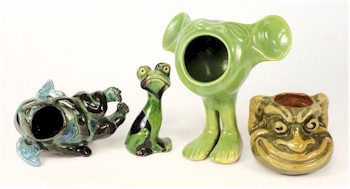
A group of William Baron Barnstaple pottery bibelots.
His response to this market was delightfully quirky and have come to be known as bibelots, small trinkets without any useful function whose sole purpose was just to be decorative, the name probably evolving from the word bauble. As you can see from few illustrated examples they are fascinating, fun and frightening all at the same time.
However, as I mentioned in my opening I was more interested in the wider influences for the North Devon potters. Much of the output, unsurprisingly, has a countryside and coastline flavour to it, with songbirds, flowers, foliage and fish featuring heavily as decorative motifs on Barnstaple pottery.
I guess, however, in an effort to aesthetically appeal to a wider national audience they sought to mimic other established manufacturers and as CH Brannam's wares had both royal patronage and were stocked by Liberty's of London it can be argued he achieved a degree of success.
William Baron likewise bought some of his artistic heritage with him as you can see from the illustrated owl vase that is very much in the spirit of those made in a silicone ware body by his previous Royal Doulton employers.
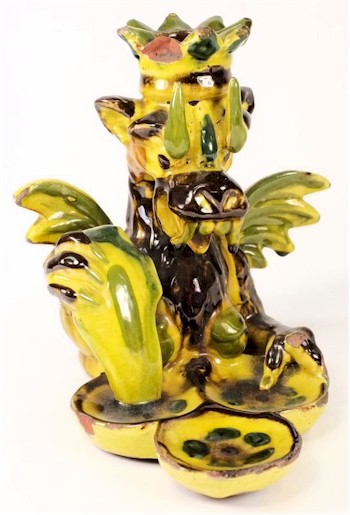
A CH Brannam Barnstaple pottery candlestick after a Cantagalli original.
However, when looking at CH Brannam's dragon candlestick, it bares more than a passing resemblance to a majolica example made at least a decade earlier by the Florentine art potter Ullysse Cantagalli, both in proportions and modelling. This very obvious copying may be seen as artistic flattery or perhaps a safe spot of plagiarism – I say safe because the prototype was made on the other side of Continental Europe and Cantagalli was in turn copying earlier Renaissance prototypes.
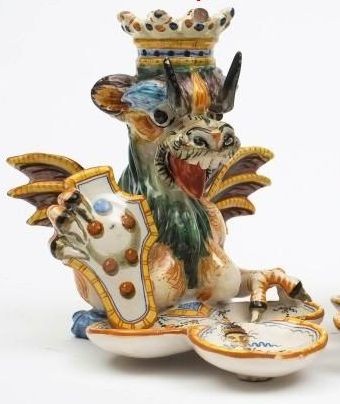
A Majolica candlestick by Ullyse Cantagalli.
Certainly the Barnstaple clay body is less refined and the decoration is somewhat parochial, so it seems to my mind that Brannam didn't quite succeed in being either one thing or the other. It's not really country pottery that sits entirely comfortably amongst the flowers and fishes of North Devon and neither could anyone mistake it for a piece of 'high' Italian art. But perhaps for some that is part of the charm of Barnstaple pottery.
- Bearnes Hampton & Littlewood
- CH Brannam
- William Baron
- Alexander Lauder
- Barnstaple Potteries
- Ullyse Cantagalli
A Return to Devon Pottery - The Artistic Influences of the Barnstaple Potteries was written on Thursday, 14th August 2014.






